Customizing your tennis racquet is a great way to tailor your racquet to your needs, and experimenting can be a lot of fun.
Here we’ll break down why you might want to customize your racquet, as well as some basic and advanced racquet techniques to help get you started.
Why Should I Customize My Tennis Racquet?
Once you’ve found the best tennis racquet for your game, you might be thinking “What is there to gain from customizing my tennis racquet?” Maybe you like the feel of your racquet, but you just wish it had a little more…
- Power
- Control
- Stability
- Spin Potential
- Maneuverability
Or maybe you just enjoy experimenting and want to try something new. You may also have recently suffered an injury and are getting back into tennis.
Basic Racquet Customization Techniques
We’ll get started by covering the basics of customizing your tennis racquet including strings and grips. While beginners should focus more on developing their game, once you’ve moved onto one of the best tennis racquets for intermediate players, you may want to try some of these customization techniques.
Changing Your Tennis String Setup
One easy way to customize your tennis racquet is by changing your string setup. There are a lot of different strings out there, so here are a few things to look out for to help you find the best tennis strings for your game.
Most strings can fall into one of four categories:
- Natural gut: best for power and recovering from injury
- Multifilament: best for power without breaking the bank
- Synthetic gut: best for most beginners & intermediate players
- Polyester: best for advanced string breakers
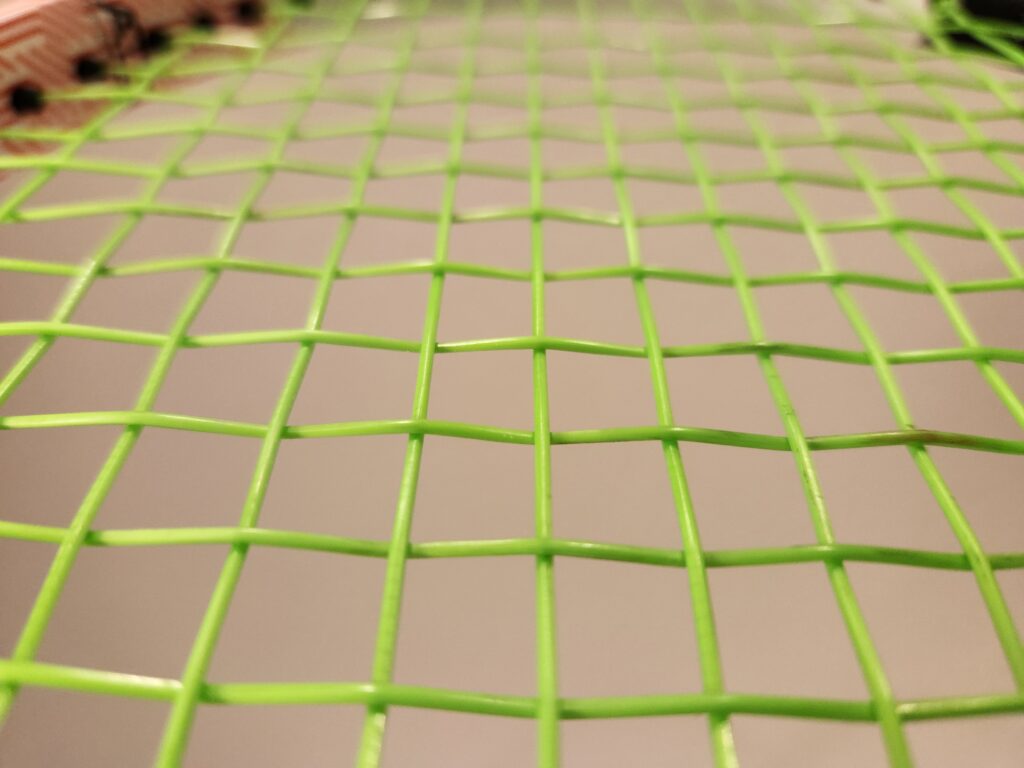
You can also change your string setup by using a different gauge (thickness) of string or adjusting the string tension. There are many different tennis string types and each affects your racquet’s performance differently.
Outside of choosing one of the best tennis racquets for spin, changing your string setup is the easiest way to get your equipment to enhance your spin generation.
Changing the Grip on Your Tennis Racquet
Another basic way to customize your tennis racquet is with your choice of grip. You can change the base grip with a replacement grip, you can add an overgrip on top of the base grip, or both!
Tennis Overgrips
Many players choose to play with an overgrip. First of all, overgrips generally increase the grip size of your racquet by half of a size. Second, the best tennis overgrips can be tacky, helping you get a better grip, or dry, helping absorb sweat in hot and humid conditions. Some people will even change the overgrip they use based on the conditions, using a tackier grip in the winter and a dry overgrip in the summer.
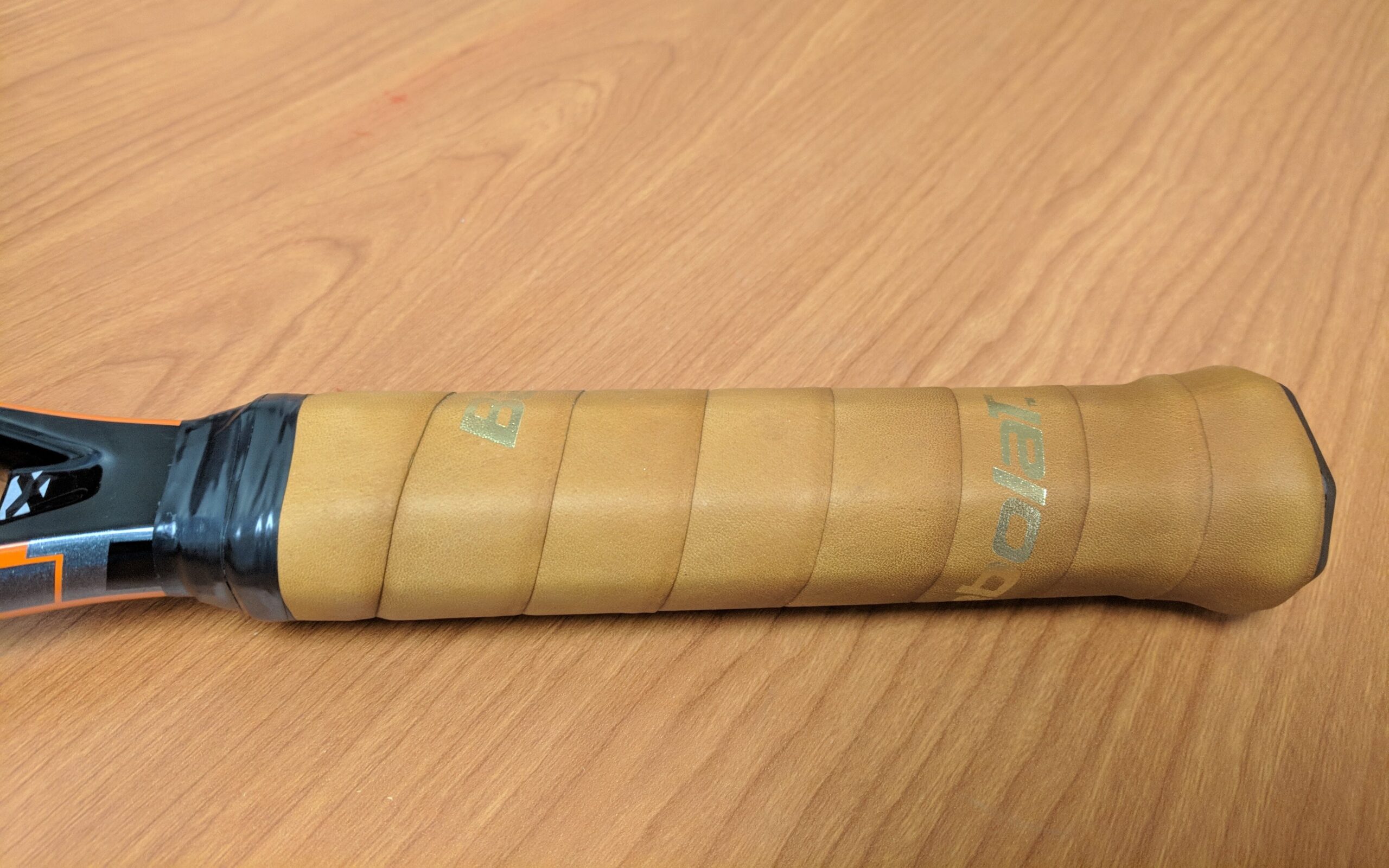
Replacement Grips
A slightly less common way to customize your racquet is through replacement grips. These are used when taking off the factory grip that comes on your tennis racquet. Some grips are thicker or thinner than standard in case you purchase a racquet and wish the handle was slightly bigger or smaller. Another option is to use a leather replacement grip, making the bevels (edges) of the racquet handle more noticeable. You can also find replacement grips that have more cushioning to help minimize the chance of injury and the energy transferred to your arm when hitting the ball.
Advanced Racquet Customization Techniques
Below we will talk about more advanced ways to customize your tennis racquet, starting with a few terms you’ll want to understand, then increasing the size of your grip, and adding weight via lead or tungsten. These techniques will be more beneficial for those who have advanced to start using one of the best tennis racquets for advanced players.
Tennis Racquet Customization Terms to Know
Before diving into advanced racquet customization techniques, let’s first make sure we understand the different terms we will be using.
- Static weight refers to the weight of your tennis racquet when it is just sitting there, such as just putting it on a kitchen scale.
- Swingweight, on the other hand, refers to the weight of a racquet while you are swinging it.
- Finally, balance refers to where on the racquet it would balance on a pole. For a standard 27” racquet, if it is balanced in the middle at 13.5” from the bottom of the racquet, it is considered even balanced. If the racquet balances closer to the handle, it is considered head light, and if the racquet balances closer to the tip of the racquet, it is considered head heavy.
Building Up Your Grip
The first more advanced technique for customizing your racquet is by building up the size of the handle. The easiest way to do this is to add a heat shrink sleeve using a heat gun. Doing so will increase your grip size while also increasing the static weight and making the balance of the racquet more head light. Your racquet’s swingweight will also increase slightly, but not as much as the static weight.
Adding Weight to Your Racquet Using Lead or Tungsten Tape
Another great way to customize your racquet is by adding weight with lead or tungsten tape. Adding weight to your racquet can do a variety of different things depending on where on the racquet it is applied. Imagine the racquet face is a clock, with 12 o’clock being at the very end of the racquet, and 6 o’clock being the bottom of the face near the throat.
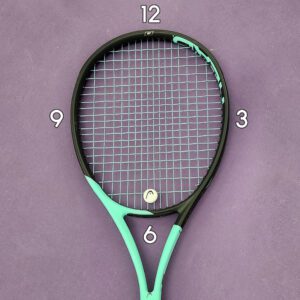
Placing weight at 12 o’clock will give your racquet increased power. It will also increase swingweight and make the balance more head heavy with minimal change to the racquet’s static weight. You won’t be able to add enough power to turn one of the best tennis racquets for control into one of the best tennis racquets for power, but you’d be surprised at how much just a couple grams of weight can do.
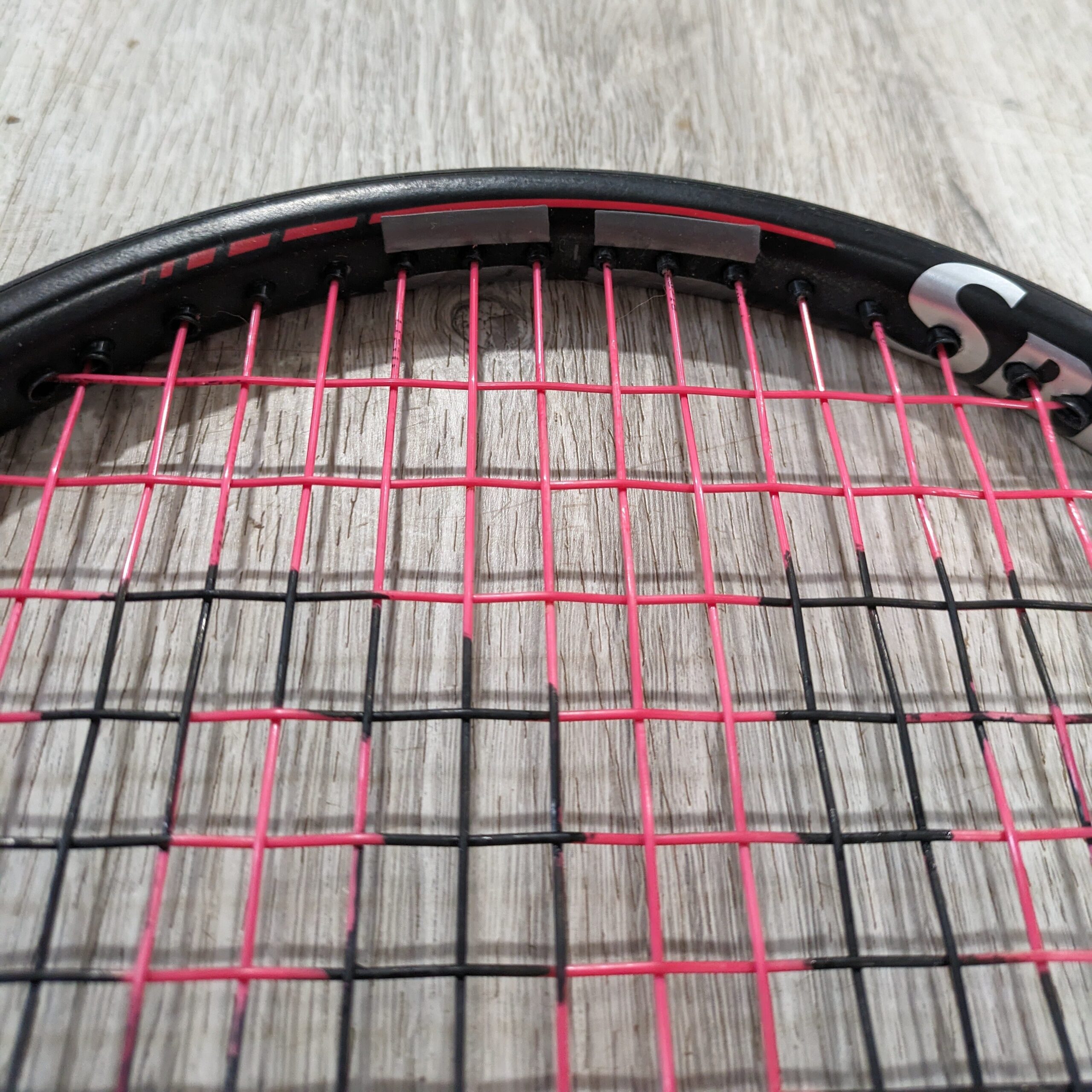
Adding lead tape or tungsten tape at 3 o’clock and 9 o’clock will increase the stability of your racquet on off-center hits, providing a more forgiving response. This will also increase swingweight and make the balance more head heavy, but will require a larger increase in the static weight to achieve the same final specs relative to adding weight at 12 o’clock.
If you’re looking for both some extra stability and power, you can add weight at both 12 o’clock and 3 and 9 o’clock. However, if you’re looking to be more efficient with your weight, you can just add it at 10 o’clock and 2 o’clock. This can also have the effect of extending the sweet spot of the racquet slightly towards the tip of the racquet.
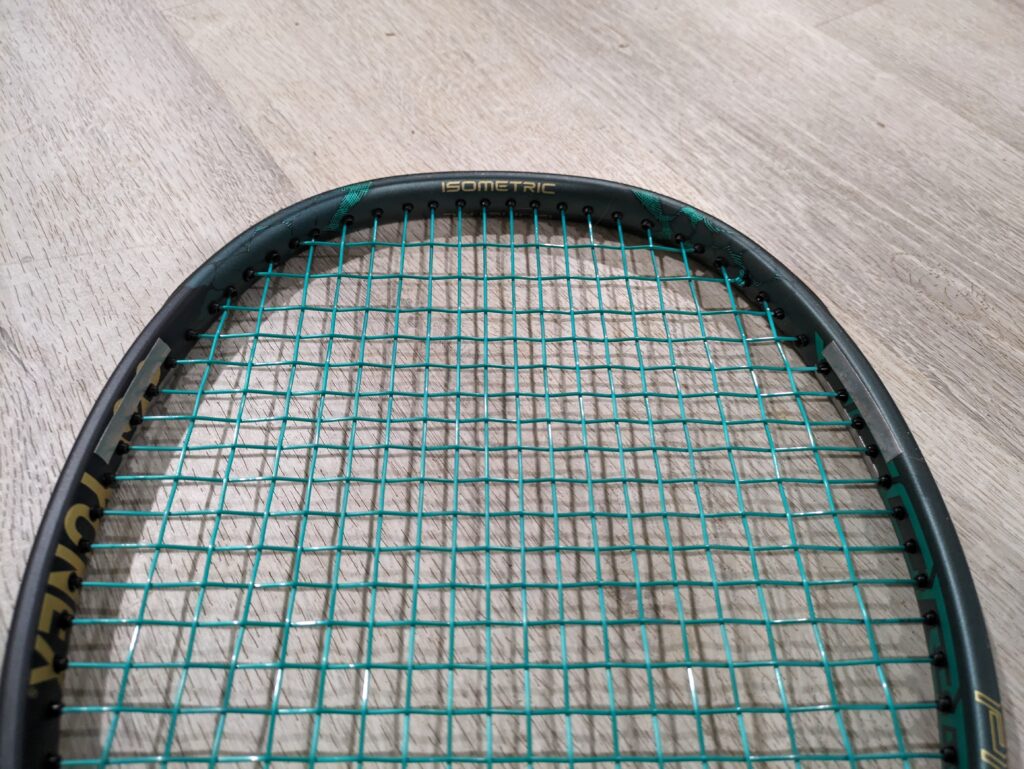
You can also add weight in the throat of your racquet if you’re looking to add some weight to your racquet without changing the balance. The swingweight and static weight will both increase, but the balance point will remain the same, maintaining similar maneuverability.
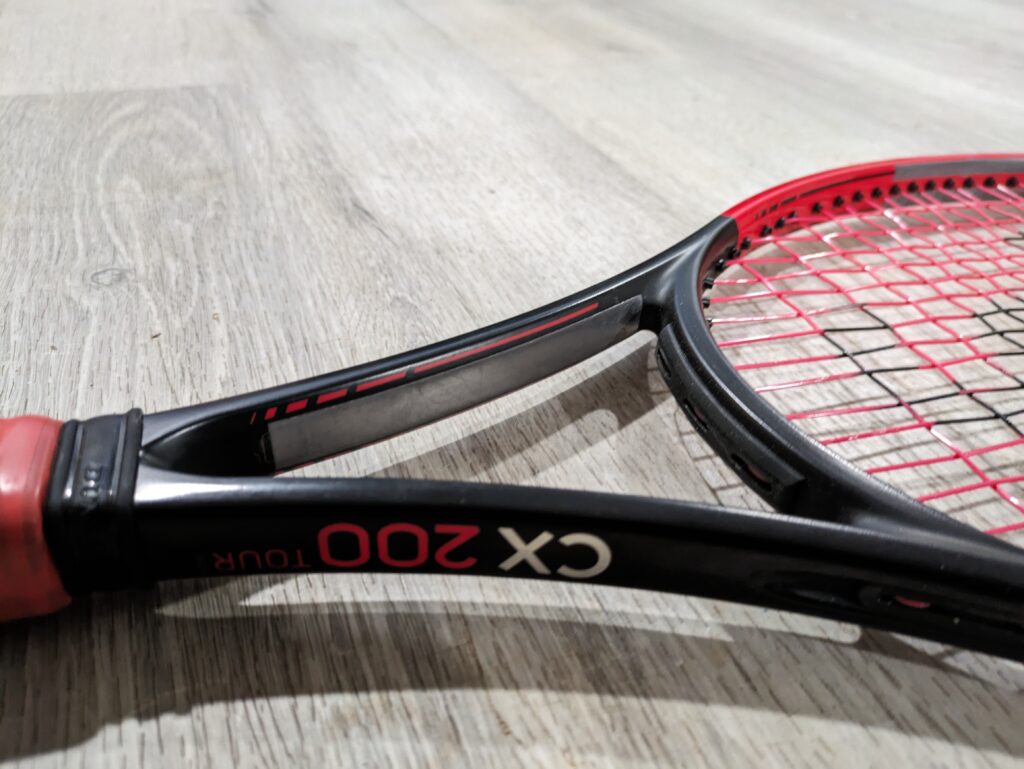
Lastly, if you’re looking for added maneuverability and a more head light balance with minimal change to the swingweight, you can add the weight in the handle of your tennis racquet. This can be done by placing weight, such as lead tape, underneath the replacement grip. Also, some racquets have a trap door under the butt cap with extra space inside where weight can be added.
Tennis Racquet Matching
Have you ever owned two of the exact same racquet, yet you always tend to reach for one of your racquets over the other? That could be due to slight differences in the specs of each racquet. When manufacturers release the specs of a racquet, that is an estimate of what you can expect your racquet to be, but it might be a little heavier or lighter, or the balance might be slightly off. That is where racquet matching comes in.
Racquet matching may take a combination of any of the above techniques to make sure the racquets feel the exact same. When matching racquets, you want to, at a minimum, look at the static weight, swingweight, and balance. There are other factors you can also look at, such as twist weight and flex/stiffness, but those are the three most important specs.
If you don’t have the capabilities to do it yourself, you might consider taking your racquet to the nearest master racquet technician who will likely be able to assist you.
Now that you know some different ways to customize your tennis racquet, I encourage you to experiment to find out what you like and don’t like. You never know until you try!

Leave a Reply